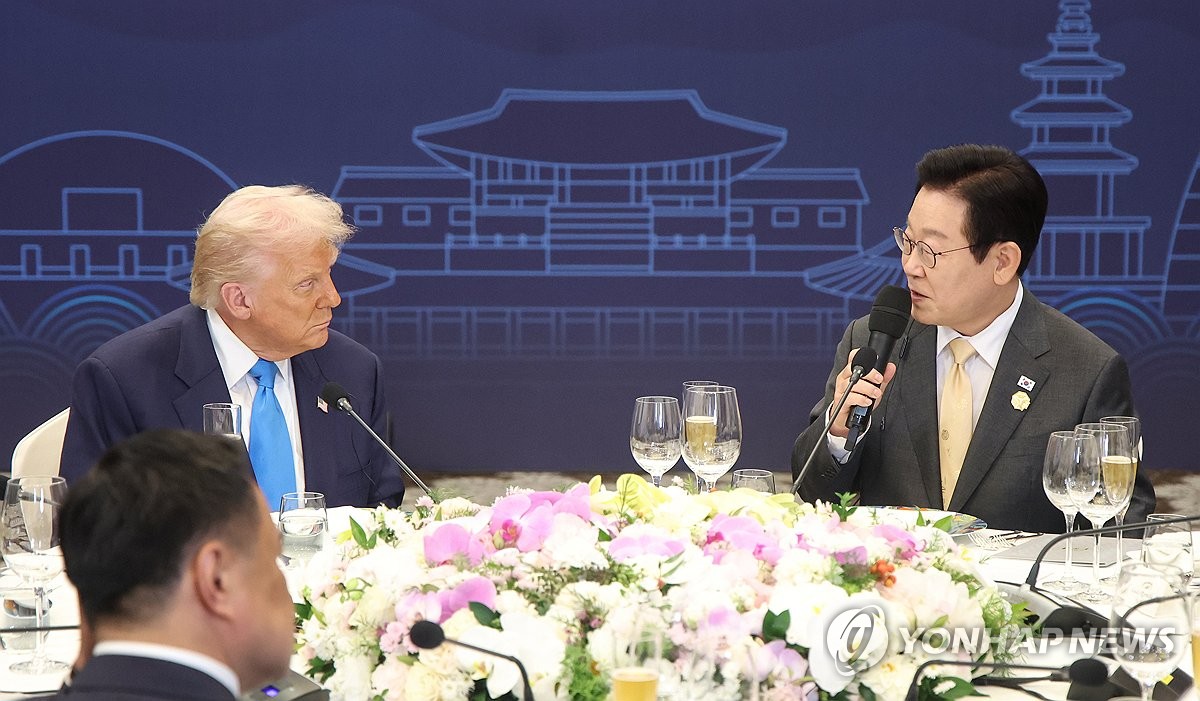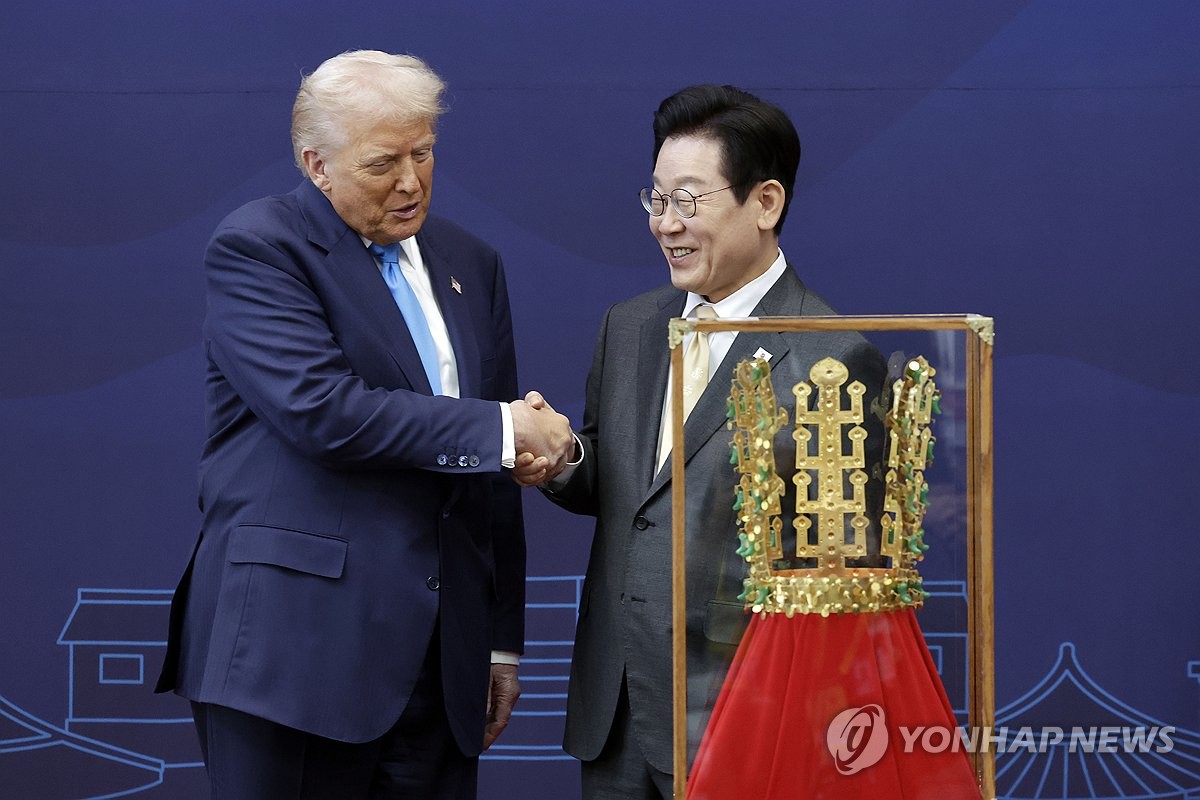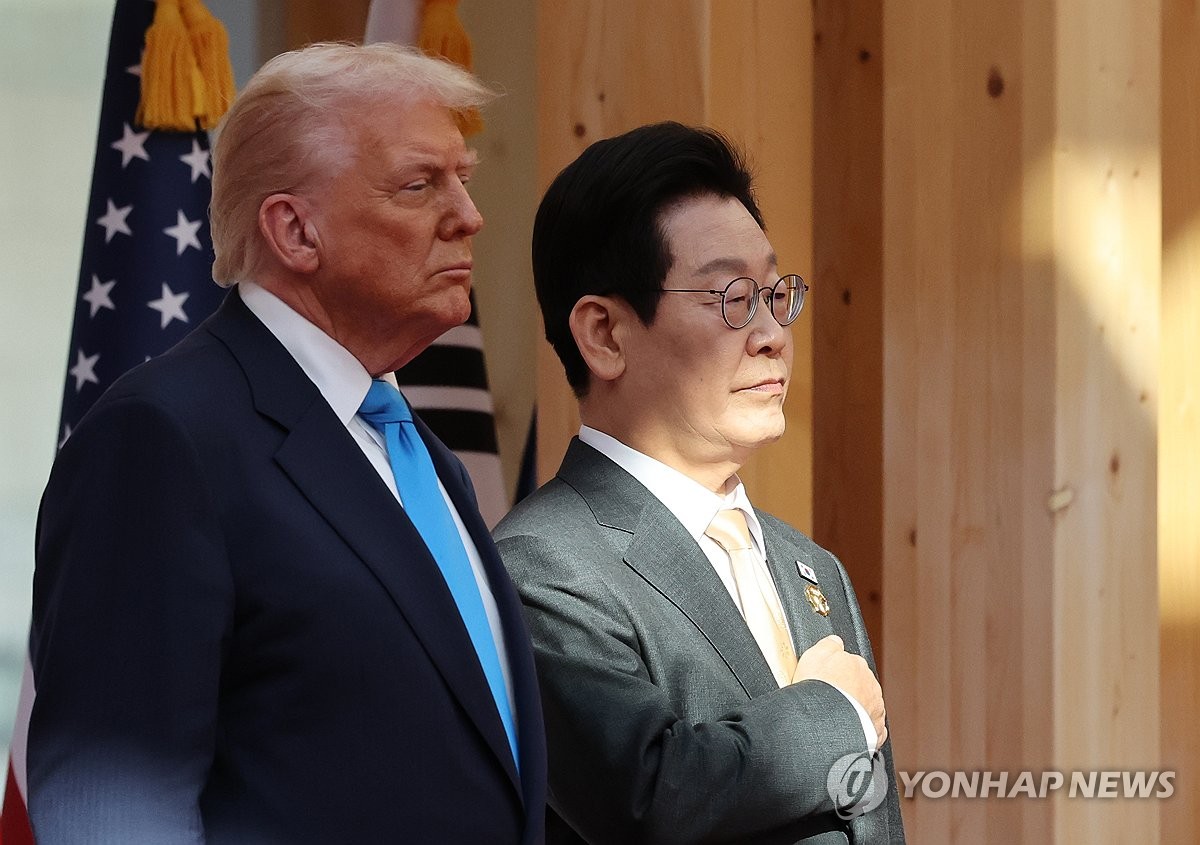
(Gyeongju = Yonhap News) Reporters Lee Sang-hyun and Hwang Yun-gi = As President Lee Jae-myung brought up a new security negotiation agenda called 'fuel supply for nuclear submarines' at the summit with US President Donald Trump held in Gyeongju on the 29th, attention is focused on the background.
At the Korea-U.S. summit held at the National Gyeongju Museum that afternoon, the president made a direct request to President Trump, saying,"Please make a decision so that we can supply fuel for the nuclear-powered submarines (SSN)."
President Trump expressed his agreement that South Korea needs nuclear-powered submarine capabilities in response to changing circumstances, including North Korea's nuclear submarine construction, and agreed to hold follow-up discussions.
Ultimately, South Korea conveyed its intention to develop and operate SSNs in response to the North Korean nuclear threat and the rapidly changing maritime security environment, and drew a positive response from President Trump.
First of all, it is interpreted that the most important reason behind this president's direct request to President Trump is the need to respond to the North Korean nuclear threat.
Although there are question marks over actual capabilities, the analysis suggests that this is due to the recognition that, given North Korea's recent efforts to strengthen its naval power, we cannot delay the qualitative transformation of our naval power through the acquisition of nuclear-powered submarines.
The introduction of nuclear-powered submarines has long been discussed as a key task for strengthening naval power, but progress has not been easy.
Meanwhile, North Korea launched the 5,000-ton destroyers 'Choi Hyun-ho' and 'Kang Geon-ho' one after another this year, and has also begun construction of nuclear submarines powered by nuclear energy.
Furthermore, it appears that South Korea's strengthening of its military capabilities through the acquisition of nuclear-powered submarines is ultimately in line with the Trump administration's pursuit of"modernizing the ROK-US alliance."

The president told President Trump,"If you allow us to supply fuel, we can build several submarines equipped with conventional weapons using our own technology and conduct defense activities in the waters around the Korean Peninsula, which will also reduce the burden on the US military."
Ultimately, it is interpreted that President Trump's consent was sought as an extension of the US's global military strategy that South Korea's acquisition of nuclear-powered submarines would contribute to the allies' need to dramatically increase their own defense spending and military capabilities.
In particular, with Chinese President Xi Jinping's visit to Korea approaching, attention was drawn to the background of President Lee's mention of"tracking Chinese submarines" as a reason for the introduction of nuclear-powered submarines.
The president said during the meeting that"diesel submarines have limited diving capabilities, so their ability to track North Korean or Chinese submarines is limited."
The Blue House later clarified that it "did not refer to a specific country's submarine," but it is clear that China is not happy with the mention itself.
National Security Office Director Wi Seong-rak also explained,"Submarines are a type of stealth weapon, making them difficult to detect, so I understand this to be an emphasis on the need to be able to detect anyone's submarine in the waters around us."
Ultimately, this can be interpreted as an indirect display of strategic clarity that there will be no tightrope walking when it comes to security, while also demonstrating a determination to secure cooperation from the United States and a will to focus on strengthening ROK-US cooperation.
This means that, in a situation where US officials have repeatedly emphasized the need for not only US forces in Korea but also the ROK military to play a role in “checking China,” President Lee may have indirectly created a pretext for the US to respond.
In addition, from a negotiation strategy perspective, it can be seen that there is an intention to not lose the initiative in security negotiations by preemptively proposing a new agenda.
This could mean that, as negotiations to revise the Korea-US nuclear agreement have made some progress, they are trying to expand related discussions to include nuclear-powered submarines.


